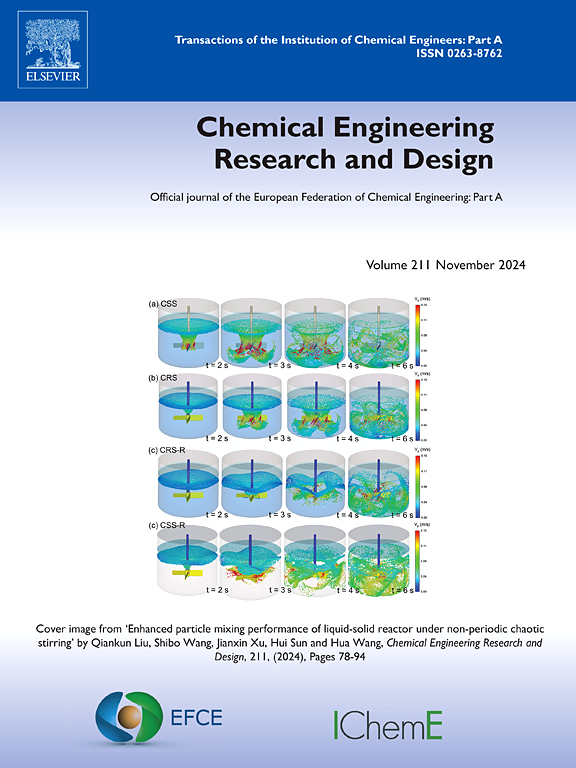Congo red removal using microwave assisted pyrolysis derived magnetic hemp hurd biochar
IF 3.7
3区 工程技术
Q2 ENGINEERING, CHEMICAL
引用次数: 0
Abstract
Industrial hemp hurd (HH) are the residue obtained after the decortication of the hemp plant for fibre production, which is seldom explored for biochar potential and as adsorbent for dye removal. The present study focused on the microwave-assisted pyrolysis (MAP) of HH for biochar production, magnetization and application for Congo red (CR) removal from aqueous solutions. Magnetic hemp hurd biochar (MHB) depicted a heterogeneous surface with 4.84 µm pore size, 17.64 m2/g surface area, and 10.05 wt% Fe. CR removal of 92 % was achieved under optimum conditions i.e., treatment time: 120 min, pH: 8, and initial CR concentration: 10 mg/L with MHB dosage of 0.6 g/L. The CR adsorption on MHB was well-fitted with the Freundlich isotherm (R2 - 0.971), owing to the heterogeneous surface of MHB. A strong match with pseudo-second order model (R2 - 0.973), indicated chemisorption as the likely adsorption mechanism. MHB exhibited 87 % CR removal efficiency after three successive reutilization cycles. The outcomes of CR removal efficiency and MHB reusability indicated its potential application for adsorptive removal of CR from aqueous systems.
利用微波辅助热解产生的磁性大麻生物炭去除刚果红
工业大麻渣(HH)是大麻植物脱皮生产纤维后的残留物,很少被开发用于生物炭潜力和染料脱除吸附剂。本研究的重点是微波辅助热解(MAP)大麻生物炭的生产、磁化和应用,以去除水溶液中的刚果红(CR)。磁性大麻生物炭(MHB)具有异质表面,孔径为 4.84 µm,表面积为 17.64 m2/g,铁含量为 10.05 wt%。在最佳条件下,即处理时间:120 分钟,pH 值:8,CR 初始浓度:10 毫克/升,MHB 剂量:10 毫克/升,CR 去除率达到 92%:10 mg/L,MHB 用量为 0.6 g/L。由于 MHB 表面的异质性,CR 在 MHB 上的吸附与 Freundlich 等温线(R2 - 0.971)拟合良好。与伪二阶模型(R2 - 0.973)的高度吻合表明化学吸附可能是一种吸附机理。经过三个连续的再利用周期后,MHB 的 CR 去除率达到 87%。CR去除率和MHB重复利用率的结果表明,MHB具有从水体系中吸附去除CR的潜力。
本文章由计算机程序翻译,如有差异,请以英文原文为准。
求助全文
约1分钟内获得全文
求助全文
来源期刊

Chemical Engineering Research & Design
工程技术-工程:化工
CiteScore
6.10
自引率
7.70%
发文量
623
审稿时长
42 days
期刊介绍:
ChERD aims to be the principal international journal for publication of high quality, original papers in chemical engineering.
Papers showing how research results can be used in chemical engineering design, and accounts of experimental or theoretical research work bringing new perspectives to established principles, highlighting unsolved problems or indicating directions for future research, are particularly welcome. Contributions that deal with new developments in plant or processes and that can be given quantitative expression are encouraged. The journal is especially interested in papers that extend the boundaries of traditional chemical engineering.
 求助内容:
求助内容: 应助结果提醒方式:
应助结果提醒方式:


